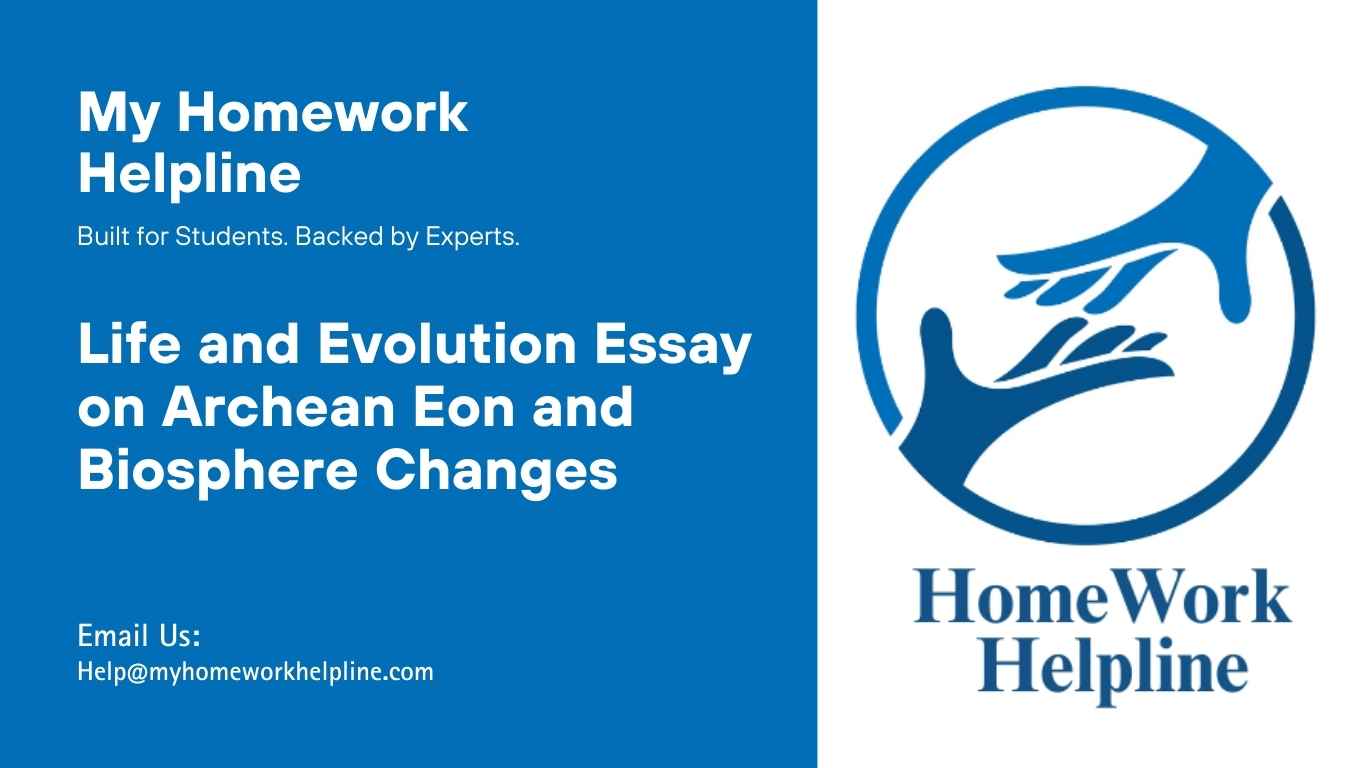Life and Evolution Essay: Archean Eon and Early Biosphere
The Archean Eon began with the formation of the Earth’s crust 4 billion years ago, extending 2.5 billion years to the start of the Proterozoic Eon. According to Catling and Zahnle (2020), fossil evidence appears in rocks, about 3.5-3.7 billion years old, of the earliest primitive life forms, which are prokaryotic microbes from the domain bacteria and Archaea. Historians believe that oxygen content in our world today must have accumulated progressively through time, beginning from an anoxic atmosphere during the Archean times.
Exploring the origins of life and early evolutionary changes can be challenging, but expert guidance makes it manageable. Whether you are working on a Life and Evolution essay, a research paper, or a geology assignment, our team provides professional geology homework helpline to help you understand Archean environmental conditions, prokaryotic life, and the rise of oxygen. Gain clarity, strengthen your assignments, and complete your work with confidence using our academic support tailored for geology students.
In the beginning, there was limited oxygen concentration in the atmosphere. Volcanos exhaled negligible amounts of free oxygen compared to carbon (IV) oxide and water vapor. Photodissociation of volcanic-derived carbon (IV) oxide and water vapor would have resulted in negligible amounts of free oxygen (Johnson et al., 2021). A significant portion of the Archean atmospheric free oxygen was derived from the organic photosynthesis of water and carbon (IV) oxide by anaerobic cyanobacteria, a process where oxygen is a byproduct. The organisms were prokaryotes, which were rudimentary unicellular organisms that first appeared at the Archean Eon’s end. While oxygen concentration was not relatively high until Proterozoic time, the processes in the Earth’s ocean before the end of the Achean allowed for the increase in atmospheric oxygen.
Therefore, prokaryotes during the Archean Eon were essential in increasing the atmospheric concentration of free oxygen. The Archean cost offered a home to mounds of colonies of stromatolites, which are photosynthetic bacteria (Lepot, 2020). Thus, the significant contribution of prokaryotes allowed for an atmosphere that was habitable to aerobic organisms. Essentially, if prokaryotes were absent during the Archean Eon, the atmosphere would still have a high concentration of greenhouse gases, hence inhabitable to aerobic organisms.
References
Catling, D. C., & Zahnle, K. J. (2020). The archean atmosphere. Science advances, 6(9), eaax1420.
Johnson, A. C., Ostrander, C. M., Romaniello, S. J., Reinhard, C. T., Greaney, A. T., Lyons, T. W., & Anbar, A. D. (2021). Reconciling evidence of oxidative weathering and atmospheric anoxia on Archean Earth. Science Advances, 7(40), eabj0108.
Lepot, K. (2020). Signatures of early microbial life from the Archean (4 to 2.5 Ga) eon. Earth-Science Reviews, 209, 103296.

